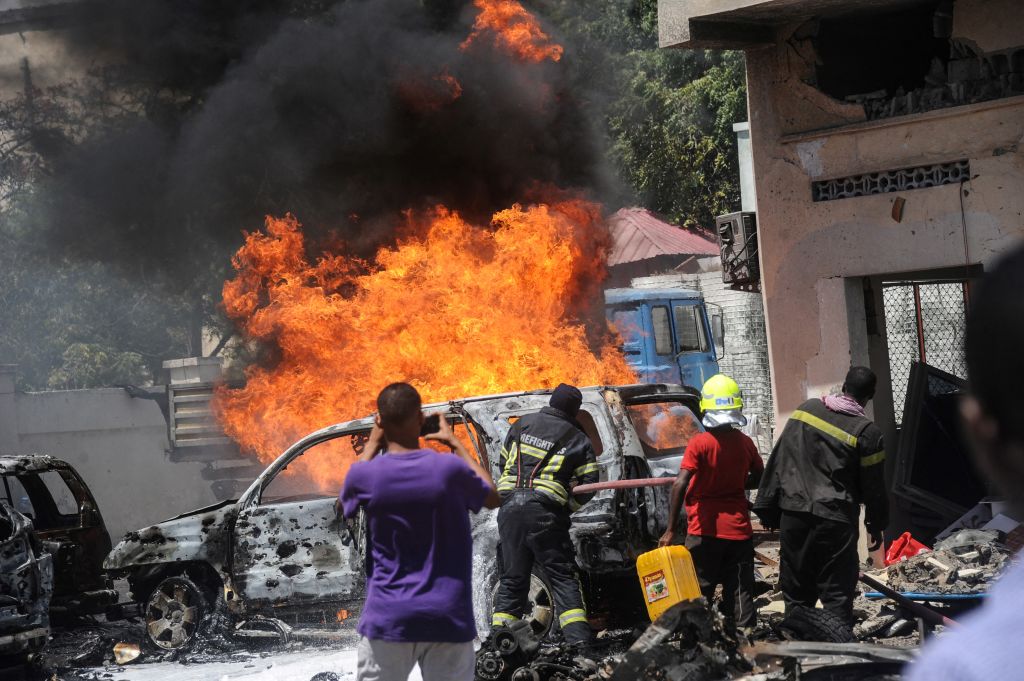ADF STAFF
The Somali Army in mid-August launched a major offensive against al-Shabaab in central Somalia as troops with theAfrican Union Transition Mission in Somalia (ATMIS) gradually withdraw from the country.
The operation includes troops with the Danab Special Forces and allied clan militia known as “Ma’awisley.” The forces deployed in Elbur, Galhareeri, Wabho and Diri in the Galgadud region and in the northern parts of the Mudug administrative region.
Al-Shabaab has controlled the areas for 15 years.
By late August, the Danab Special Forces regained control of the Dac area in Galgadud. Around the same time, the Danab forces recaptured two other Galgadud localities and launched an attack on a third, according to Somali media group GoogJoob News.
Ethiopian forces serving with ATMIS also made strides against al-Shabaab in southern Somalia.
“An ongoing offensive has thwarted al-Shabaab actions and cleared many supply routes, increasing security and protection for local people,” ATMIS said on X, formerly known as Twitter.
The operations are part of the second phase of military operations against al-Shabaab during the ATMIS troop withdrawal. During the first phase, 2,000 troops from Burundi, Ethiopia, Djibouti, Kenya and Uganda withdrew and 3,000 more are expected to leave by the end of September. ATMIS has until December 2024 to hand over full security responsibilities to Somali forces.
The first offensive reclaimed about one-third of the territory controlled by al-Shabaab. The Somali government also reported that 3,000 militants were killed and more than 3,700 others were wounded in the operation.
Somali President Hassan Sheikh Mohamud has vowed to wage “total war” against al-Shabaab and pledged to eliminate the group in months. He has also offered to negotiate a ceasefire.
But al-Shabaab leaders “are not interested in dialogue,” Mohamud said, according to a report by Somali news website Garowe Online. “As the President of the Somali government, I have repeatedly offered amnesty, declaring that they are pardoned, and this offer remains open.”
The al-Qaida affiliated group is known to hide out in Somalia’s sparsely-populated savannah to avoid detection. It typically uses improvised explosive devices, truck bombs, rocket-propelled grenades and suicide bombers in its attacks.
“When you are in a fight, you will have losses,” Maj. Mohammed Aydarus, commander of the Danab Forces, told Foreign Policy magazine. “But we are determined to defeat the enemy and continue the operation. Every year, we continue to recruit new forces.”
Despite suffering military losses, al-Shabaab has proven resilient. It killed three Soldiers and wounded several others during two simultaneous attacks on a southern suburb of Mogadishu, the capital, on August 23.
The attacks targeted a police station, local administrative headquarters and two security outposts, Garowe Online reported. The heaviest attack was on the police station, where the militants detonated a car bomb before engaging police in a gunfight during which they fired bazookas, witnesses said.
The previous day, an al-Shabaab car bomb killed at least one person, an official with the local transportation department, in Mogadishu.
Al-Shabab may have up to 14,000 fighters left — almost double the number it had three years ago — but some of them are forced child soldiers, not hardened fighters, according to Foreign Policy magazine. Many militants have left the group as Somali forces reclaim swaths of territory.
“They will not all want to die,” Hussein Sheikh Ali, Somalia’s national security advisor, told the magazine. “The defection will increase.”
However, a two-day al-Shabaab attack on Somali Army troops left dozens of Soldiers wounded and an unknown number dead. The late August attack occurred in the town of Cowsweyne in Galgadud.
A Somali Soldier who gave his name as Isse told Reuters that at least 17 Soldiers were killed. A Soldier named Dahir said he was sure that “many” Soldiers and militants were killed in the battle but could not say how many.
“At about 6 a.m., a car bomb went bang, and a hellish battle followed,” said Dahir. “When we got reinforcements, fighting intensified and we beat the hell out of the terrorists.”

